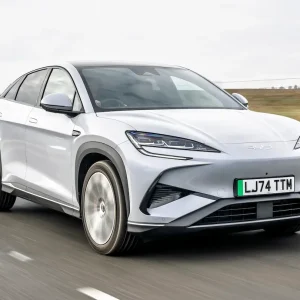Electric vehicles are on their way to mass adoption. Few would disagree with this statement, but there is still a great deal of unease among fleets about the UK’s current infrastructure and whether it can really cope when sales start to increase rapidly.
With over 30 plug-in models available, fleet managers and drivers are not short of options when it comes to choosing an electric-powered car, and previous range concerns are starting to disappear too, with some current electric cars capable of more than 250 miles (officially) per charge.
For most people, the majority of charging takes place at home or at the workplace – however, peace of mind that you can travel long distances in electric vehicles and the availability of charging points around cities are important for EV confidence and making the cars viable for all-round use.
Although some companies will have set routes and distances that their vehicles need to travel, flexibility and adapting to changes in routine is still imperative for most business drivers if EVs are to be used as company cars.
Old points
Depending on who you talk to, there are between 11,000 and 27,000 charging connectors today in the UK. However, if you go by the larger figure, research suggests that a third of these don’t actually work.
That’s because when electric vehicles like the Mitsubishi i-Miev and Peugeot Ion, neither of which are on sale today, started to enter the marketplace in 2011, early adopters leapt into action and began installing charging points.
These points were typically slow units with around 3kW of power, and because battery technology is improving significantly all the time, they can no longer withstand the requirements of the modern EV. Plus, even where they are compatible, they will take an age to charge your car.
James O’Neill, UK Director, at Chago, believes the standard needs to be around 22kWh to facilitate plug-in cars today.

“I don’t think there are as many chargers as people are led to believe – it reinforces range anxiety,” he says. “The reality is that we are dealing in a high-paced and evolving industry and it’s difficult to keep up.”
An area that was often neglected with these early charging points was ongoing maintenance. Like any electrical product, EV chargers need servicing and looking after, and these first units were often left once installed, and thus became redundant after a period of time.
“There are a lot of legacy products put in by early adopters with what they deemed right for electric vehicles,” O’Neill tells BusinessCar. “Essentially, you have to take into account the life cycle of the product: it needs to be durable for public usage, it has to be robust, and needs to stand the test of time. Any electric product should be checked annually. From what I’ve seen so far, some older products haven’t been working for at least a year.”
Erik Fairbairn, CEO at charging station provider Pod Point, agrees, although he believes that these infrastructure issues have turned a corner over recent years.
“If you spoke to me two or three years ago I would have said that the number of units working would have been a serious problem,” he says. “There are old legacy units, which you can put down to a lack of knowledge. It’s getting close to a solved problem, though. They’re not just units you purchase, they need regular support to work, just like any electric equipment.”

David Martell, chief executive at Chargemaster, the UK’s largest provider of EV charging points, puts the recent improvement down to the private sector, which is taking a more active role in the installation and upkeep of these points than the previous local authority owners, having more time and budget for regular upkeep.
“The position has improved considerably over the last couple of years as the private sector has taken over the council-owned sites introduced through the Government Plugged-in Places schemes. This is because local authorities usually do not have the budget for maintenance of charging points,” he explained.
Education is key
According to recent AA research, EV sales are set to soar over the next couple of years, and it is expected that there will be more than 500,000 electric and plug-in hybrid vehicles in use by 2020, a significant jump on the approximate 90,000 currently registered today. Despite this optimism, 81% of respondents to the research highlighted concern that when they reach their destination, they would not be able to find a charging point available.
Public charging points are operated by either a national or regional network. The largest regional organisation is Source London, and once a member, EV users have access to all charge points within the network.
National networks have also been developed using private or public funding. The main operators that offer charging facilities across the country include Ecotricity, Pod Point and Chargemaster – all of which require some form of registration and have costs attached.
To help avoid redundant points, apps like Zap-Map help give a clearer picture of the active charging stations here in the UK. According to the app, on 30 December there were 11,859 connectors on 6,460 units across 4,241 locations in the UK, alongside 2,176 rapid charging connectors.

A great number of public points are now 7kWh and take, depending on the battery size of the car, between three and four hours to complete a full charge. The rapid chargers vary from 22kWh to 43kWh and can return the battery to 80% life in 30 minutes.
One of the key frustrations for fleets that was discussed at the recent Future of the Car Summit, hosted by low-CO2 car campaigner Go Ultra Low, is around other road users blocking EV bays when they do not run an electric car. Charging companies are pushing site owners to be more proactive in making sure these spaces stay reserved for EV users, and Pod Point’s Fairbairn believes that supermarkets and shopping centres, especially, should think about where these bays are placed.
“Enforcement could be done, but you have to think about where you put the charging bays too,” he says. “Right by the front door will be a premium parking spot and maybe placing the charging points further away will prevent other road users from blocking them.”
The charging companies agree that more education about why EV owners need the space will also help, but penalties, like those in place for disabled parking, could also be an option.
“Penalties should be considered – they made the choice to drive petrol, the same as people make the choice to drive electric, and we have to see a rise in the standards of what’s on offer,” says O’Neill.
We simply need more chargers

The number of charging points in the UK is a key issue and the providers are open about the fact that the amount needed for mass adoption to be realistic is significantly more than what we currently have.
“We need around one million charging points around the UK to be more compatible for more people,” Fairburn tells BusinessCar. “In the UK we’re starting to get to the point where it’s beginning to make sense, but the fact of the matter is, we’re not quite there yet.”
High on Pod Point’s agenda for 2017 is the integration of more charging facilities at places where people will stay for an average of an hour or more per visit. Supermarkets, hotels, cinemas and entertainment venues are high on the list.
“A Pod Point available for where you’ll be for an hour or so is the goal. Shopping centres are important. A large number of us use the train, so charging points are needed there too, and hotels and concert halls,” says Fairbairn.
Martell believes 50,000 points should be the goal for the UK by 2020.
“There are currently around 11,000 public charging points across the UK, including approximately 900 rapid chargers. By 2020 this will need to be increased to around 50,000 charging points, and companies such as Chargemaster are investing heavily to achieve this goal. There just needs to be more,” he says.
Future investment
In November’s autumn statement, chancellor Philip Hammond announced an investment of £80m to support charging infrastructure in the UK, as well as 100% capital allowances in the first year for firms investing in charging points. Although positive news, it is yet to be confirmed how much of the pot will be invested into public charging infrastructure. Charging points currently cost from £2,000 to £20,000 to install.
According to Fairbairn, EV technology doesn’t go from zero to 100% in one step and, as well as funding, more education is vital for helping people discover if an electric vehicle can really work for them.
“When you move to an electric vehicle you need to educate and it’ll take time to get used to how it will fit your life. If your fleet is actively doing journey cycles which suit the range, then EVs are perfect but they are not for everyone,” he tells BusinessCar. “I think by 2020 we’ll see the 200-mile-range electric car cost around £20,000. Until then, EV technology doesn’t go from 0-100% compatible in one step.”





